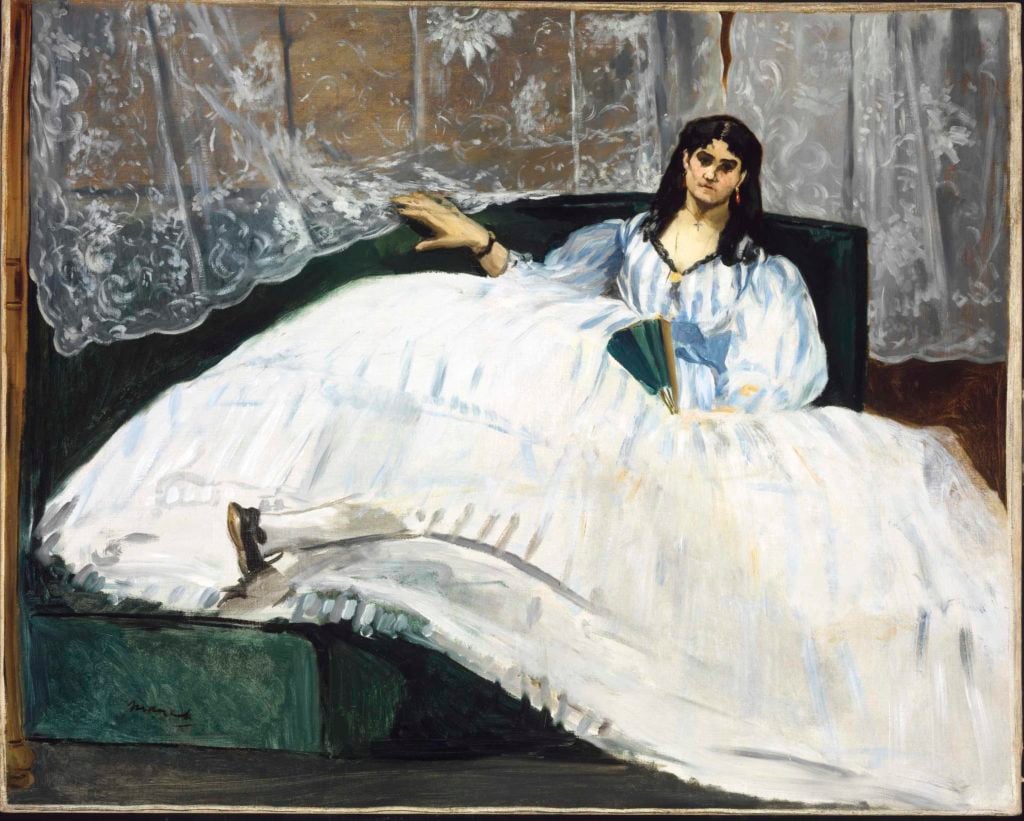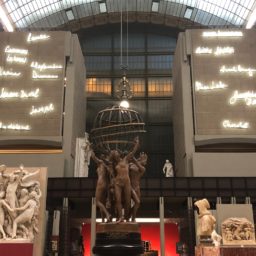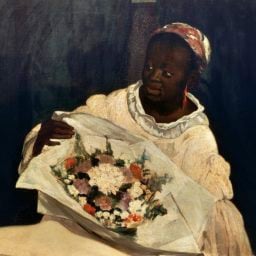Every student of art history will at some point come across Édouard Manet’s Olympia, a painting widely considered as a foundational work of modern art. Denise Murrell recalls the moment the lecture slide first flashed up on the screen when she was a graduate student at Columbia.
“My heart started beating a little bit faster,” Murrell says, remembering how she took in the white nude, the prostitute Olympia, and the Black servant in equal measure, leaning in to listen closely to what followed.
“I’m really curious to hear what the instructor is going to say about the Black servant,” Murrell explains. “Is it going to be in racial terms? Is he going to explicitly express the fact that she’s Black, and will it be in terms that I’m not going to find outdated in terms of current thinking about issues of race?”
Instead, the professor spoke about Olympia without mentioning the maid figure in the image, which bothered Murrell more than anything that might have been said about her. “From my perspective, she was there in plain view. I saw her just as clearly as I saw the white prostitute. But to ignore her, to say nothing about her, to not acknowledge her presence, rendered her invisible.”
This experience motivated Murrell to find out more about the figure in the painting. Although the artist Lorraine O’Grady wrote a famous paper about her in the ’90s, Murrell discovered there were exponentially fewer articles dedicated to the Black figure than the white one. So she embarked on a journey that began as a seminar paper, expanded into her PhD thesis, and on October 24, will finally open at the Wallach Art Gallery at Columbia University as an exhibition, which will be expanded at the Musée d’Orsay in Paris in March next year.
Posing Modernity
In New York, Murrell’s show will be titled after her thesis: “Posing Modernity: The Black Model from Manet and Matisse to Today.”
Beginning with Olympia, the exhibition pinpoints a break from stereotypical, Orientalist representations of the Black female figure in art history. Murrell’s inquiry into the Black model—who, it turns out, was called Laure and lived among the Impressionists in the Batignolles neighborhood of Paris—lifted the veil on a hitherto little-documented facet of the Modernist era in Paris: the multiracial artistic milieu surrounding Manet and his followers.
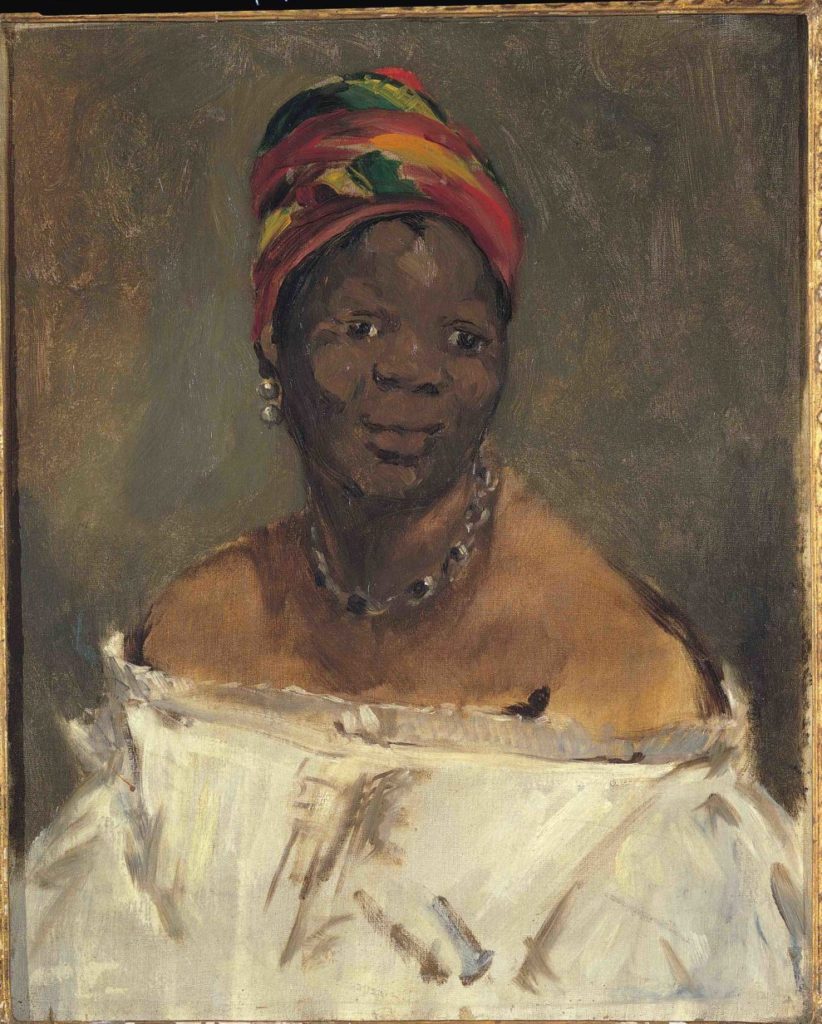
Édouard Manet, La négresse (Portrait of Laure) (1863). Collection Pinacoteca Giovanni e Marella Agnelli, Turin. Photo by Andrea Guerman, ©Pinacoteca Giovanni e Marella Agnelli, Turino.
“I believe that Manet presented the maid in a way that suggests that the painting is as much about her and as a representation of the racial aspect of everyday life in modern Paris, just as much as it was about the prostitute as a representation of the changing codes, the changing mores, of sex work,” Murrell says.
Through the exhibition of around 100 paintings from different stages of art history, as well as letters and photographs from archives, the show traces the evolving representation of the Black female figure. The show includes another Manet portrait of Laure and his portrait of Jeanne Duval, Baudelaire’s mistress, a biracial woman of French Caribbean origin.
These will feature alongside other images of Black models from Manet’s followers in the early years of Impressionism, including Frédéric Bazille’s The Young Woman With Peonies (1870), work by Edgar Degas, and archival photographs of the avant-garde artistic circle from the photographer Nadar.
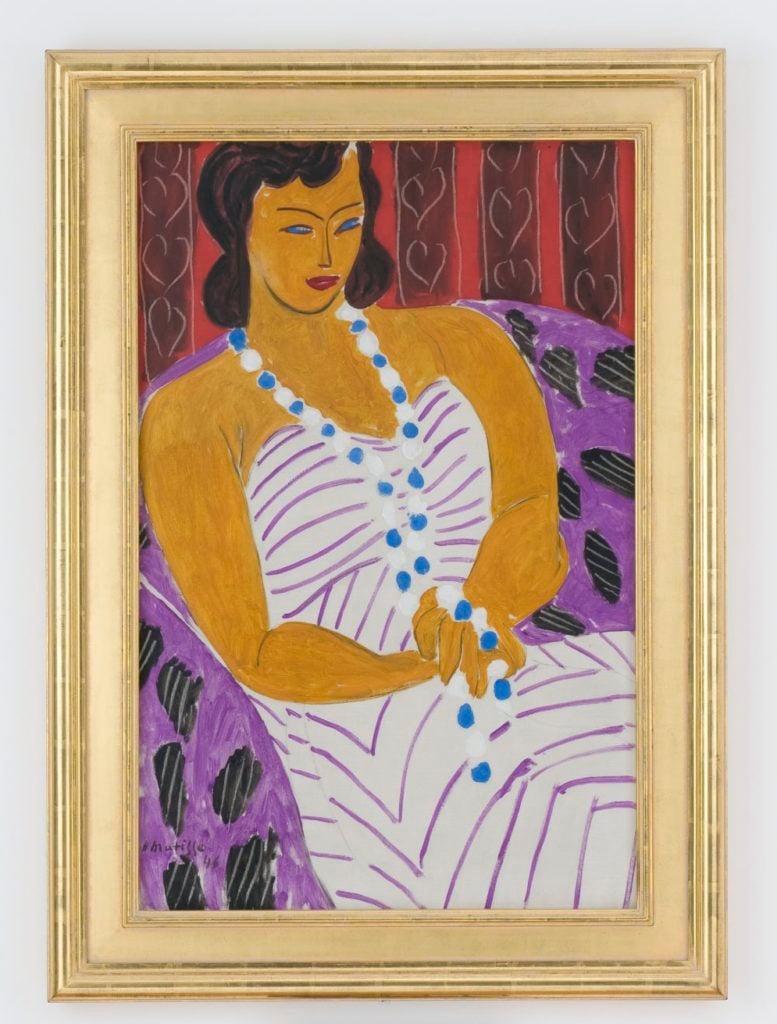
Henri Matisse, Dame à la robe blanche (Woman in white) (1946). Des Moines Art Center Permanent Collections, gift of John and Elizabeth Bates Cowles. Photo by Rich Sanders, Des Moines, Iowa; Matisse © 2017 Succession H. Matisse / Artists Rights Society (ARS), New York.
Interestingly, the show also delves into the work of Matisse, an artist whose name might be surprising in this context. Archival letters show that on his visits to the United States, Matisse worked with women of color and interacted with artists active in the Harlem Renaissance movement, which inspired a shift in his artistic style.
The final segment of the exhibition features postwar and contemporary artworks, including work by African American artists such Romare Bearden and Mickalene Thomas, that look back critically at earlier representations of women of color, including those by Manet and Matisse.
From the Library to the Gallery
The former director of the Wallach, Deborah Cullen, invited Murell to expand her thesis into an exhibition for the gallery’s newly expanded off-campus venue because she believed it had the potential to draw a broad audience. But because Murrell was no longer a Columbia student, she first had to acquire external funding, which posed a problem.
“Things just were not happening,” Murrell explains. After around two years of coming up empty, a funding application to the Ford Foundation was finally came through in early 2014.

William H. Johnson, Portrait of Woman with Blue and White Striped Blouse (ca. 1940–42). Smithsonian American Art Museum, Washington, D.C., Gift of the Harmon Foundation. Image courtesy Smithsonian American Art Museum, Washington, D.C.
Murrell attributes this late-in-the-game aid to Darren Walker, who had just become president of the foundation and was repositioning its grant-making around the idea of art and social justice. According to the New York Times, Walker was frustrated to learn that Murrell had had so much trouble funding the show. With the support from Ford, Murrell was able not only to mount the project, but also gain access to prestigious lenders, from the Musée d’Orsay and the Musée du quai Branly to the Getty and the Smithsonian.
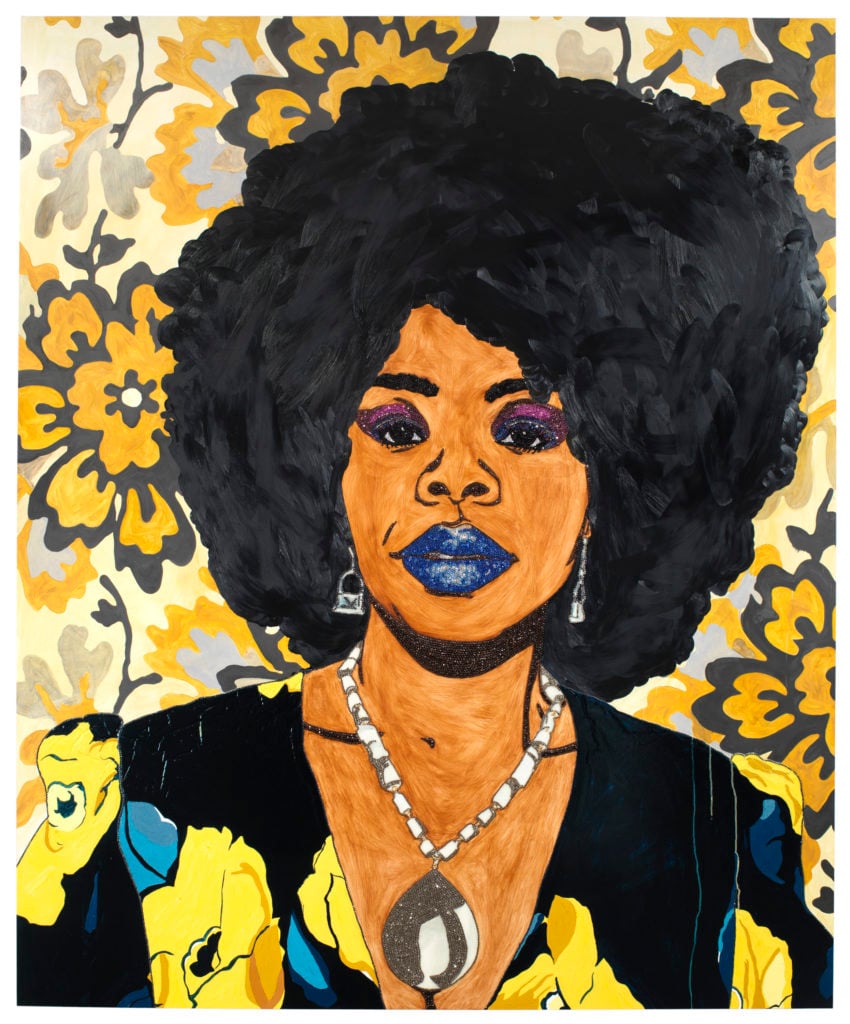
Mickalene Thomas, Din, une très belle négresse (2012). Jiménez-Colón Collection, Ponce, PR. © Mickalene Thomas / Artist Rights Society (ARS), New York.
The Black Model
Next March, an expanded version of the show will open at the Musée D’Orsay in Paris with assistance from Orsay curators Isolde Pludermacher and Edouard Papet; Cécile Debray, the director of the Musée de l’Orangerie, and Stéphane Guégan, a scientific advisor.

Frédéric Bazille, Young Woman with Peonies (1870). National Gallery of Art, Washington, D.C., Collection of Mr. and Mrs. Paul Mellon. Image courtesy National Gallery of Art, Washington, D.C.
The show will be renamed “The Black Model, from Géricault to Matisse,” to accommodate its expanded scope, which considers earlier portraits by Marie-Guillemine Benoist and Jean-Louis André Théodore Géricault as well as seminal Orientalist portraits from the 1800s as its starting point. It will include images of Black men as well.
Murrell says that the president of the Orsay, Laurence des Cars, was committed to bringing the show to Paris as part of a wider strategy to open the museum up to new audiences.
“It’s a general policy to be a museum open to all kinds of publics, especially those who are afraid to come or don’t think that the museum is for them,” des Cars told artnet News. “An exhibition like this is definitely an opportunity to reach out to communities that might feel far from the museum world.”
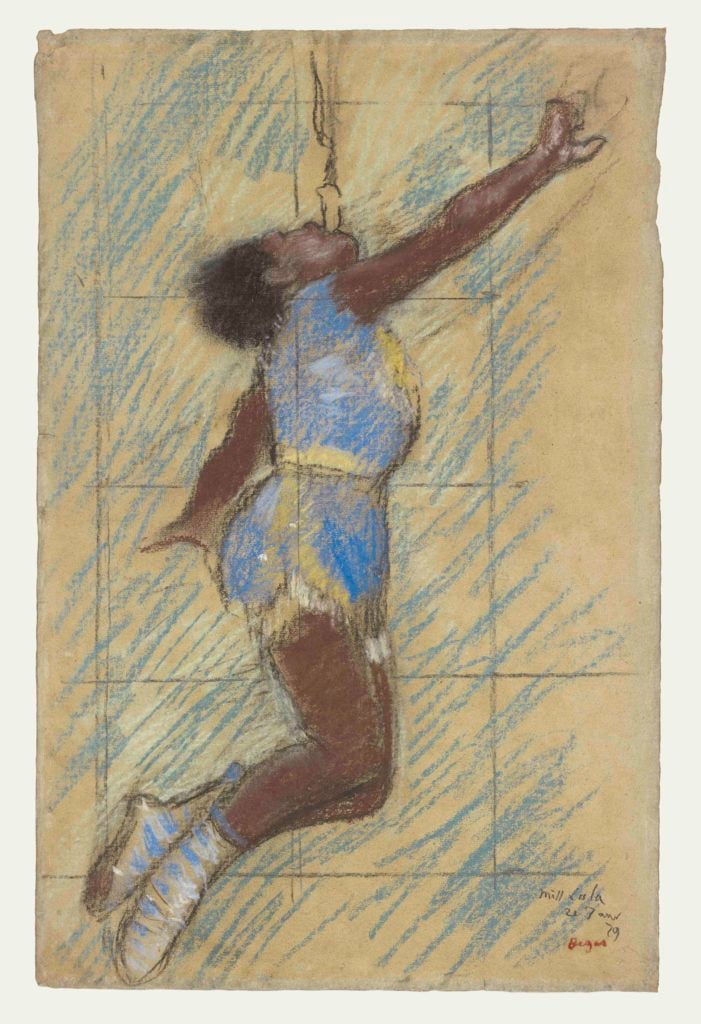
Edgar Degas, Miss Lala at the Fernando Circus (1879). J. Paul Getty Museum, Los Angeles. Courtesy the J.Paul Getty Museum, Los Angeles, Calif.
The show in Paris also integrates French political history, beginning with the French Revolution and the first (failed) abolition of slavery. It’s the first time a museum of the Orsay’s size and stature has dedicated an exhibition to this question, des Cars says, but she anticipates it won’t be the last. “We can hope that a masterpiece like Olympia will be read in a different way,” she says.
“Posing Modernity: The Black Model from Manet and Matisse to Today” is on view at the Wallach Art Gallery at Columbia University from October 24 to February 10, 2019. It will run in expanded form at the Musée D’Orsay in Paris from March 26 through July 14, 2019.
